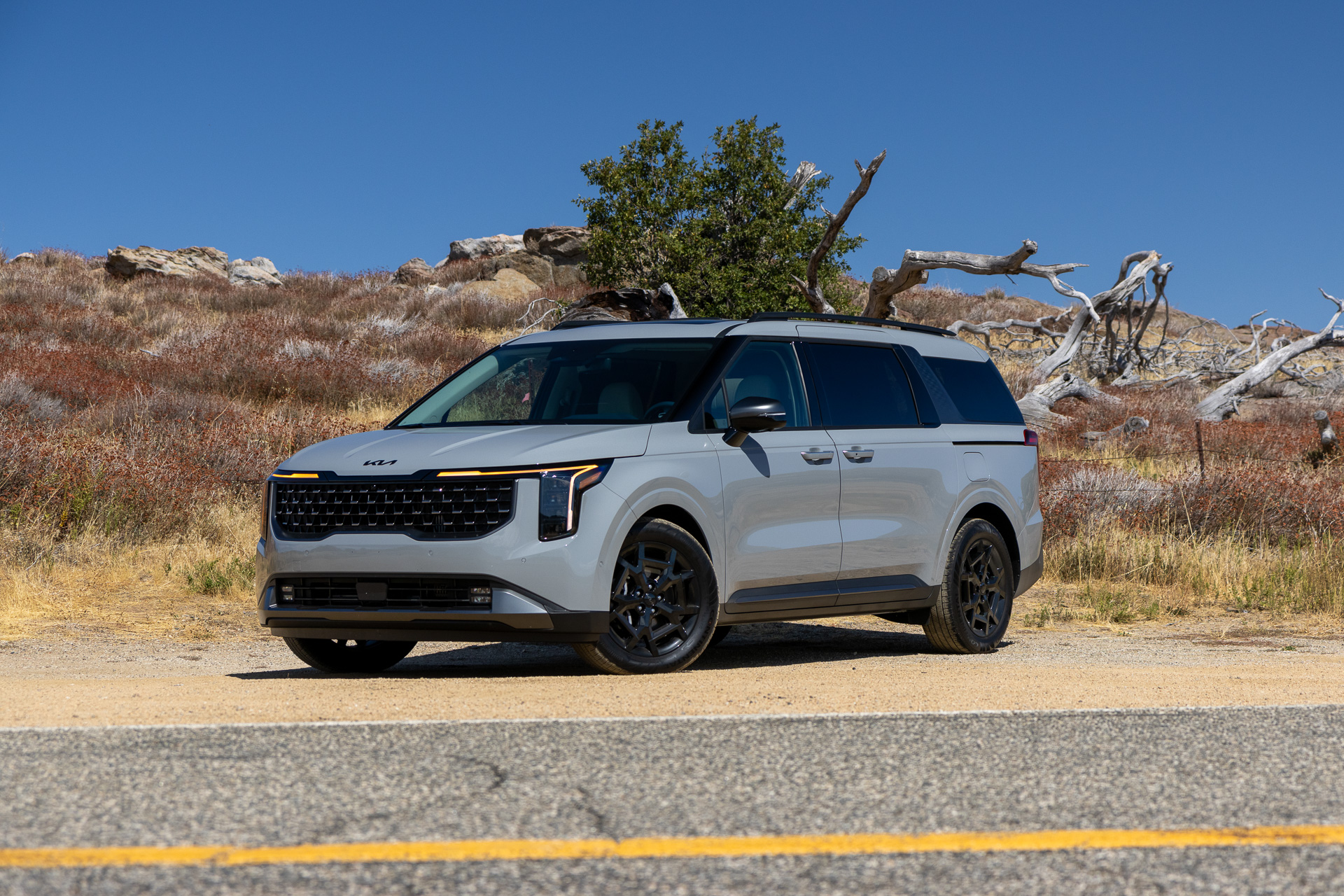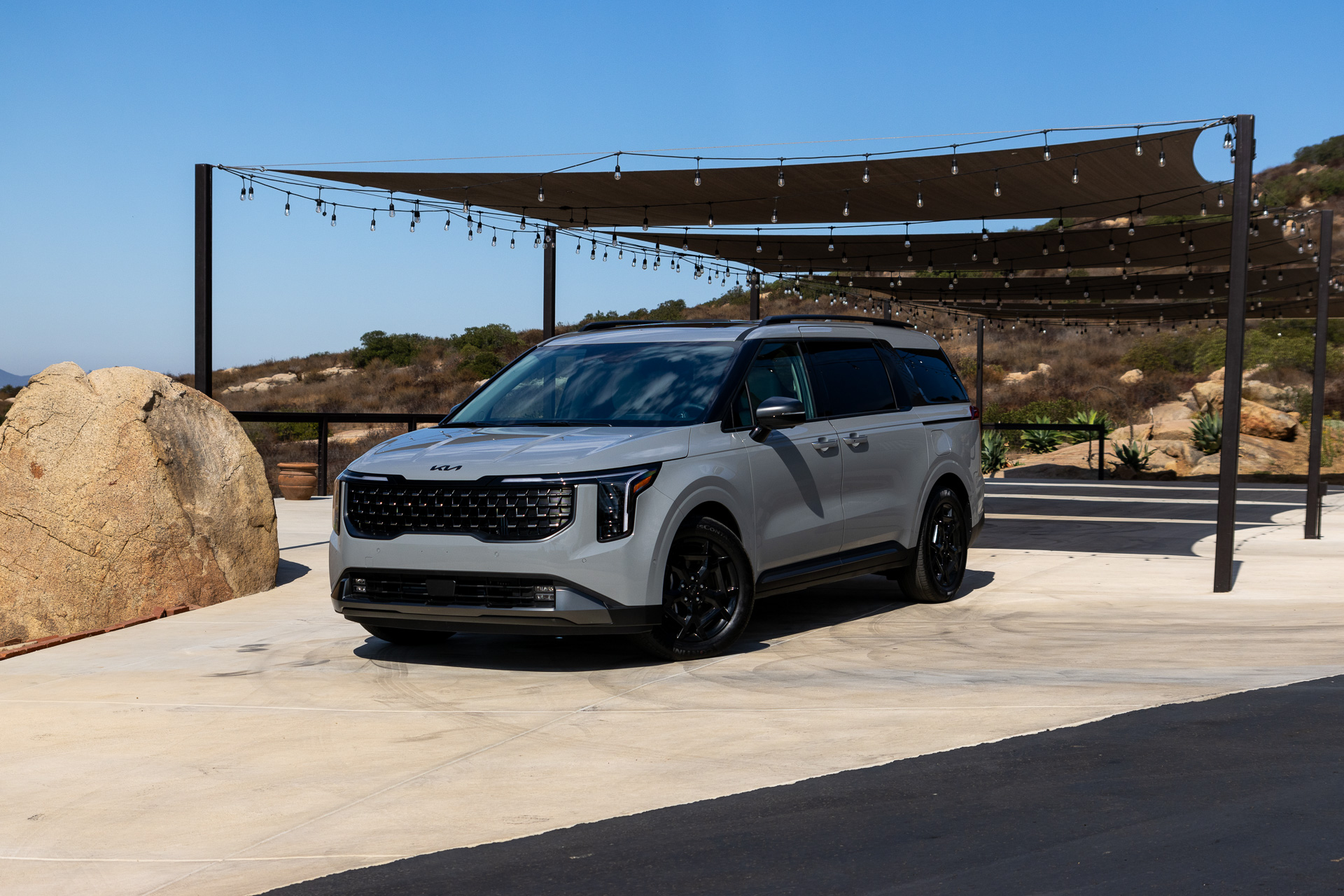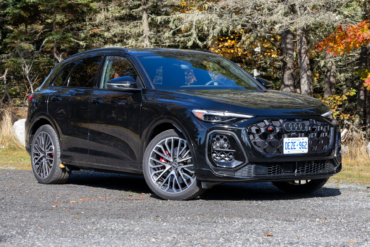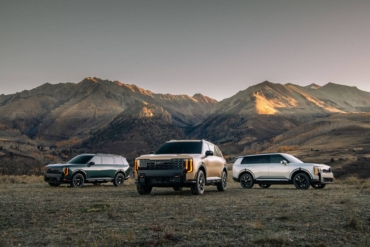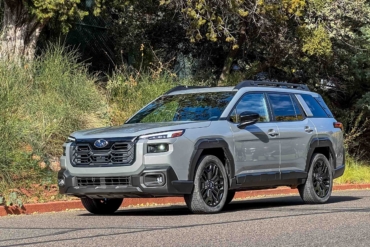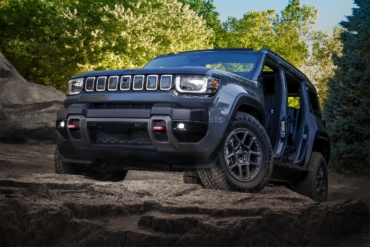The Kia Carnival already stood out in the minivan segment by not driving like a minivan. The 2025 Carnival refresh makes it not look like a minivan, either. I went to the mountains east of San Diego to check out the changes to this people-mover and to test out its new hybrid system, which promises 50% better fuel economy than the V6.
Most automakers consider the minivan segment dead, or at least close to it, even if we think they’re great adventure wagons. They’re selling mostly to the same people who bought a van the last time they went through a dealership, or at least that’s what Kia is telling us.
Kia’s customers, though, are different. They’re younger — the brand’s youngest of any model — while two-thirds are new to the brand, and more than half are new to the van segment. It’s Kia’s quickest-moving model, and it sells virtually all of them to real people instead of fleets.
This means you’ll see this van in young and hip parking structures, not your local rental chain’s lot. That’s a big deal for any automaker, and it’s especially important in a segment that is definitely not considered young or hip. So Kia has leaned in on that customer for the refresh.
In short: The 2025 Kia Carnival gets more SUV-like looks without ruining the package. Small tech upgrades improve the user experience, while a well-tested hybrid system gives it fuel economy and refinement the old V6 could never dream of.
- Engine: 1.6L turbocharged I4 Hybrid
- Horsepower: 242 hp
- Torque: 271 lb.-ft.
- Mileage: EPA est. 34/31
- Cargo capacity: 40.2 cu.-ft. (145.1 max)
- MSRP: $40,500
Pros
- Smooth hybrid power
- Massive space
- Comfy ride
- Affordable price
Cons
- It's still a minivan
- No AWD available
- MPG lags competition
- Need to remove seats for flat floor
2025 Kia Carnival Review
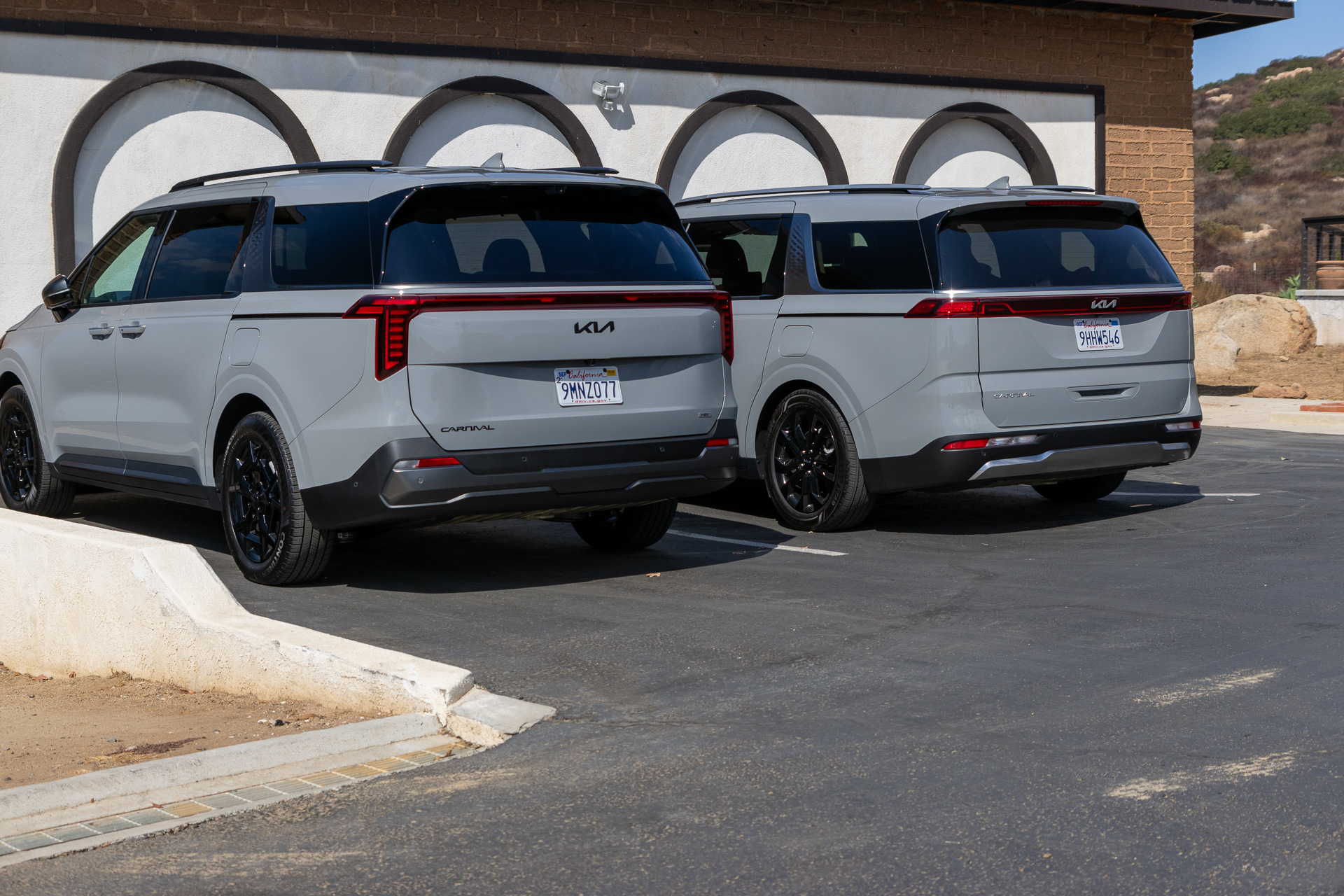
For 2025, Kia has given the Carnival looks inspired by its Telluride SUV sibling at the front and the rear. The changes are small, with new lights, bumpers, and the tailgate covering almost all of it. But the overall effect is massive. Suddenly the van doesn’t look like a van anymore.
Kia happened to bring along the old model as a chase vehicle for execs and PR staff. In the same color, parked alongside the new models, the difference was night and day. This front-wheel-drive van looks as rugged as just about any crossover, even if it’s slightly less capable when you leave the pavement.
I say slightly, because part of the Carnival’s SUV looks come from ride height. With 6.8 inches of ground clearance, it has more than any other minivan offers as standard (the Sienna Woodland trim gets 0.1 inches more) and just an inch or so less than a Telluride. It’s not going to bash down trails, but it’s perfectly capable of getting down that dirt road to your favorite campsite or trailhead.
This Van Is Made for Hauling
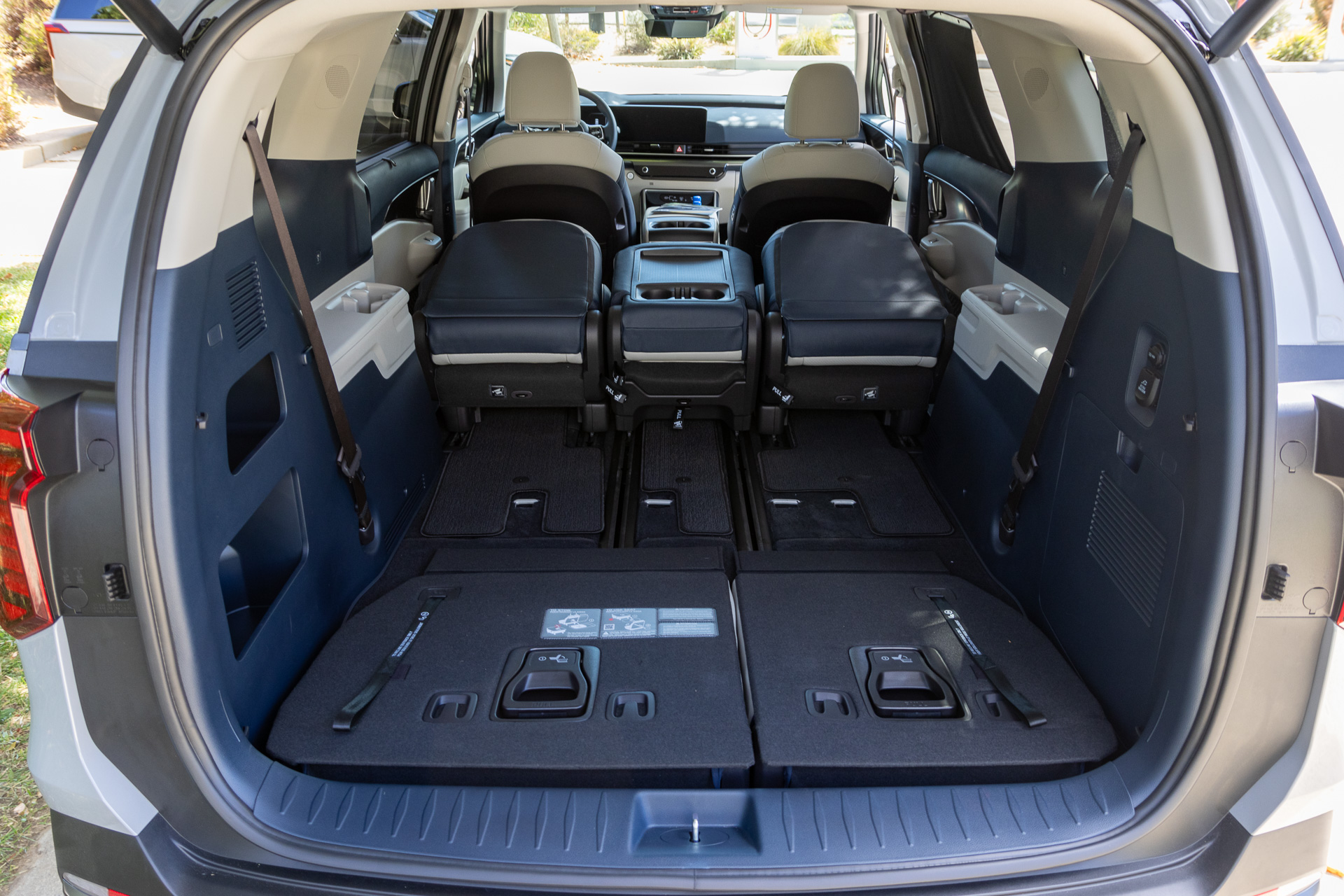
When you’re getting ready for the trail, the Carnival has exactly what you want from a minivan: Massive amounts of space for people and cargo.
It has 40.2 cubic feet of cargo room with all three rows of seats in use. Fold the third row and remove the middle seats, and you get 145.1 cubic feet and a flat floor from the hatch to the front seats.
That’s significantly more space with its seats in use than Chrysler, Toyota, or Honda, and more than all but the most massive three-row SUVs. Stow the third row (all of these vans can hide those seats in the floor) and remove the middle seats, and it’s on par with Chrysler and Honda.
But it crushes the only other conventional hybrid in the class, the Toyota Sienna, which maxes out at just 101 cubes because its middle seats don’t come out.
There are some caveats to the Carnival’s space. Fold the seats flat instead of putting the third row under the floor and the second row in the garage, and the space is nowhere close to flat. It’ll do for cargo, but not for camping.
The second-row seats aren’t exactly a breeze to remove, either, but they are much easier to get out than Honda’s awkward and hulking 80-pound units. Strangely, reinstalling them was incredibly simple, and I managed to do it by accident on two attempts.
Lounge Seats Trade Max Cargo for Max Comfort
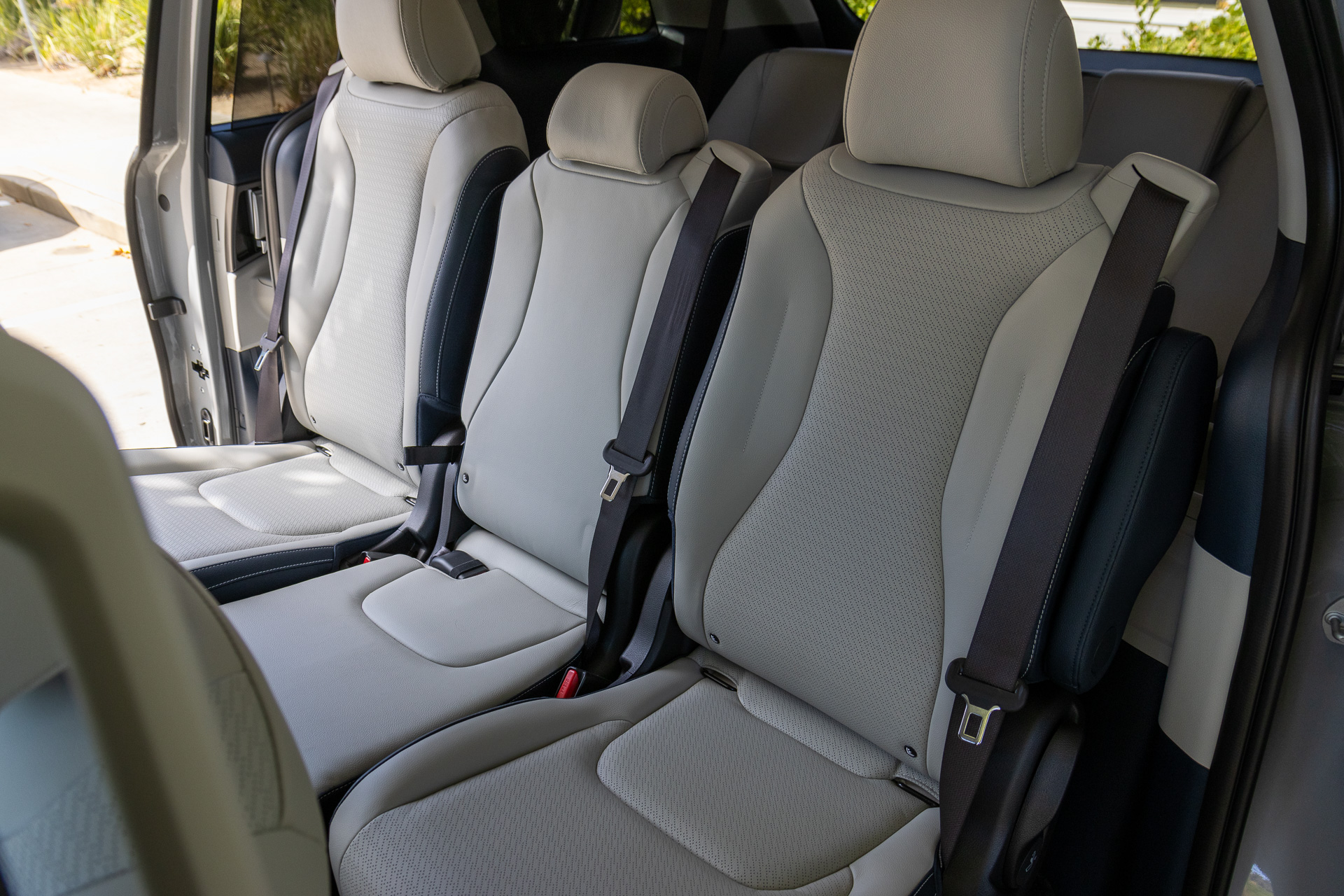
Kia’s fancy-pants VIP lounge seats are amazing. They recline, they have leg rests, and they have heat and ventilation. Those can all be activated through your voice, by the way. You can even opt to get them with a pair of giant (and expensive) television screens. What you can’t do is fold them flat or remove them.
Since they’re only an option on the top SX Premium model, it’s probably not an issue. But knowing you can’t pop them out for the swankiest camp chairs ever is something you should know before you leave the dealer.
V6 Lives, but New Hybrid Is the Better Choice
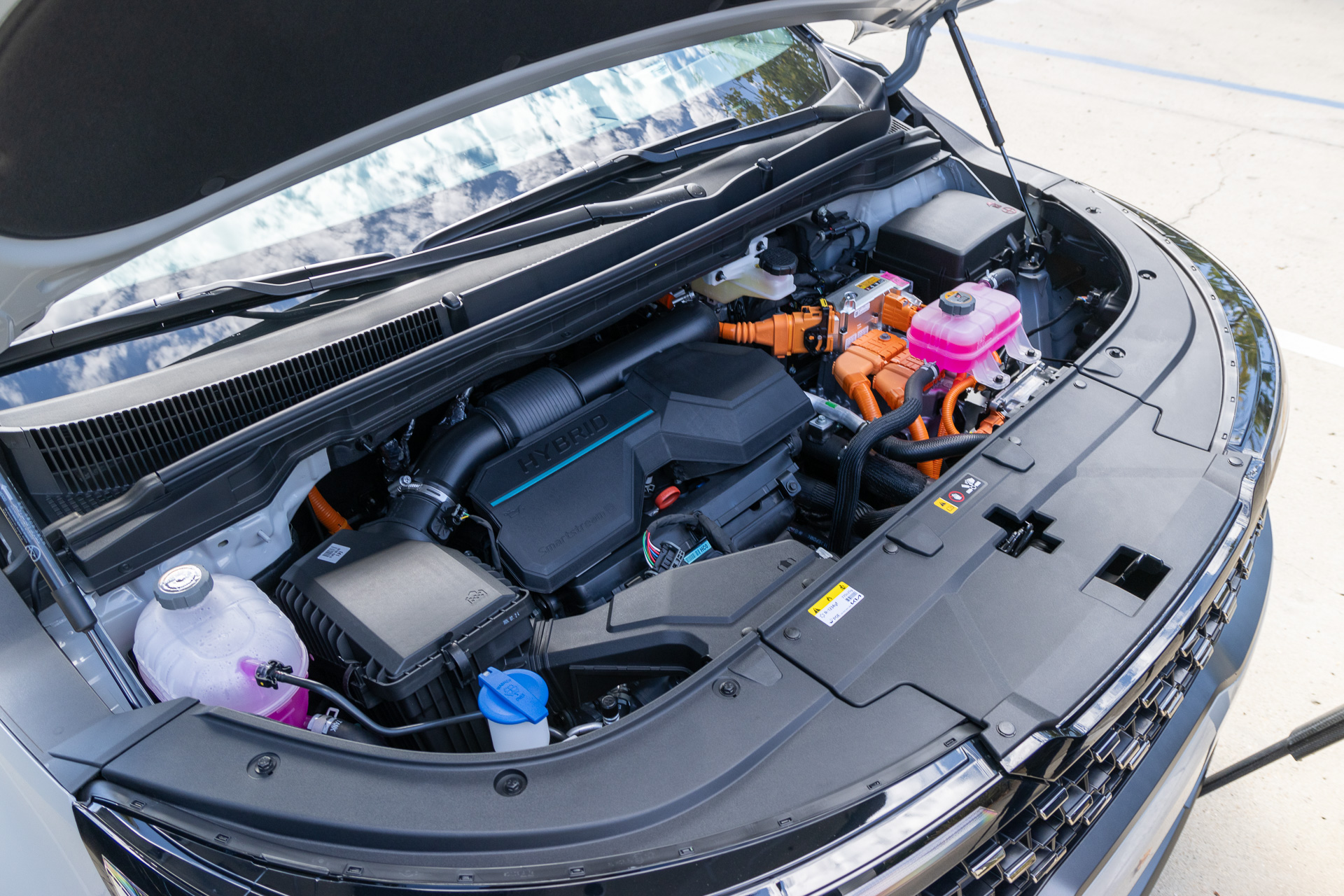
A 3.5L V6 making 287 horsepower is the standard engine. It can tow 3,500 pounds and gets an estimated 21 mpg combined. This is the same engine we already know from the prior-year models.
The hybrid system is also familiar. It’s the same 1.6L turbo-four as found in the Sportage and Sorento hybrids (plus a few Hyundai models), and it has a six-speed conventional automatic transmission.
To help move the bulkier Carnival, Kia uses the 74-horse electric motor from the PHEV models of those vehicles, not the standard hybrid motor. The difference that matters is that this motor makes more power and torque.
Total output from the hybrid system is 242 horsepower and 271 pound-feet of torque, up from the 227 horses and 258 pound-feet of Kia’s other big hybrids. It can tow 2,500 pounds, and the EPA estimates it will get 34 mpg city, 31 highway, and 33 combined.
Why Does This Drive Better Than Any Other Van?
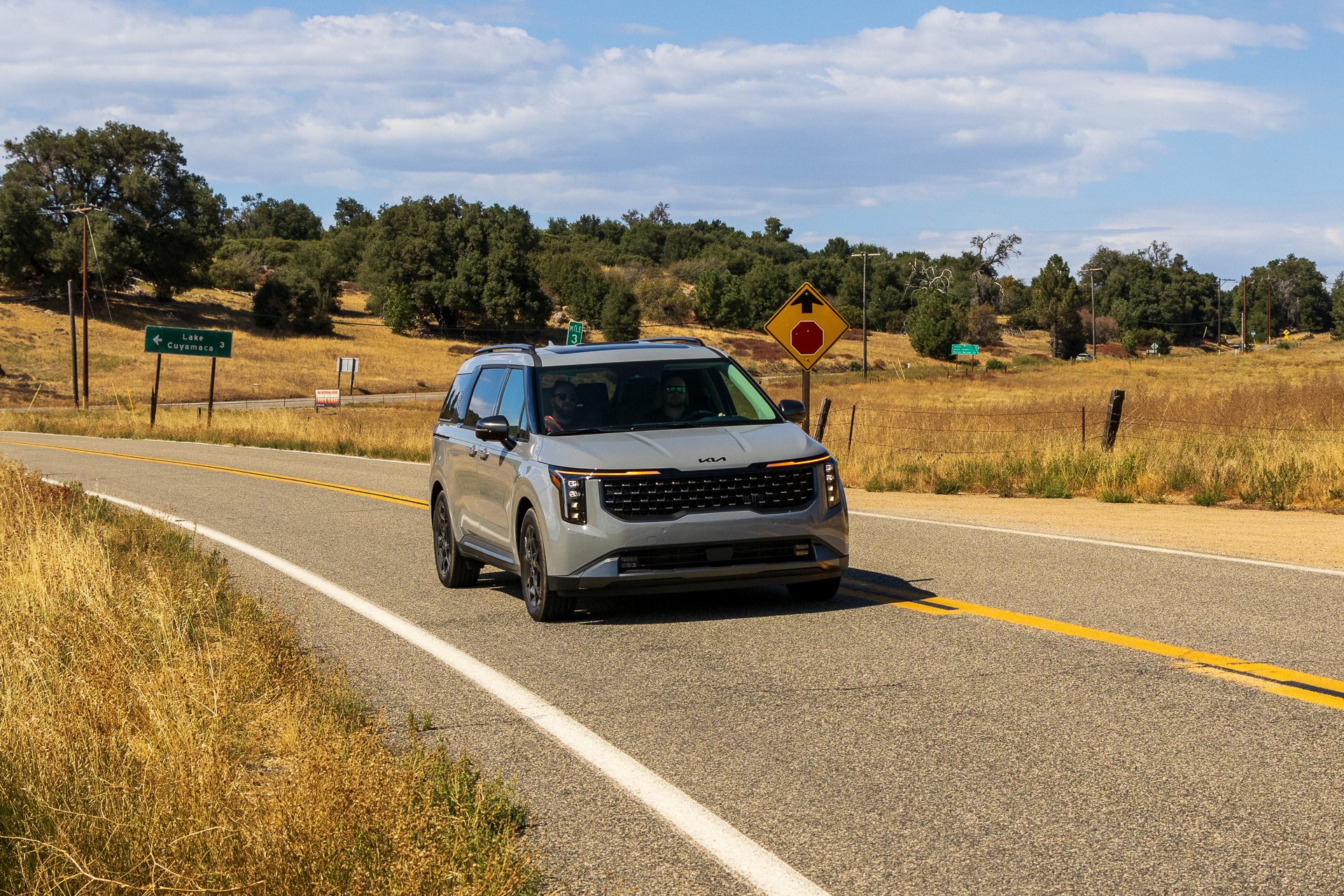
The question then is, is this tough-looking hybrid minivan any good? The short answer is yes. It looks less like a van than before, and it continues not to drive like one.
Kia’s team on hand was tight-lipped about the difference between the Carnival and other vans underneath, but it’s something significant. Carnival has the upright feel, tall seating position, and excellent outward view of an SUV, but it doesn’t have the bus-like steering wheel angle common to these vehicles.
Steering that feels more car-like than van-like makes driving it more pleasant. It’s not pretending to be a sports car, and it’s not pretending it can hammer down logging roads, and that lets the engineers make the chassis softer and thus more comfortable. Exactly what you and your passengers actually want.
Smooth, Quiet, and Rattle-Free Cabin
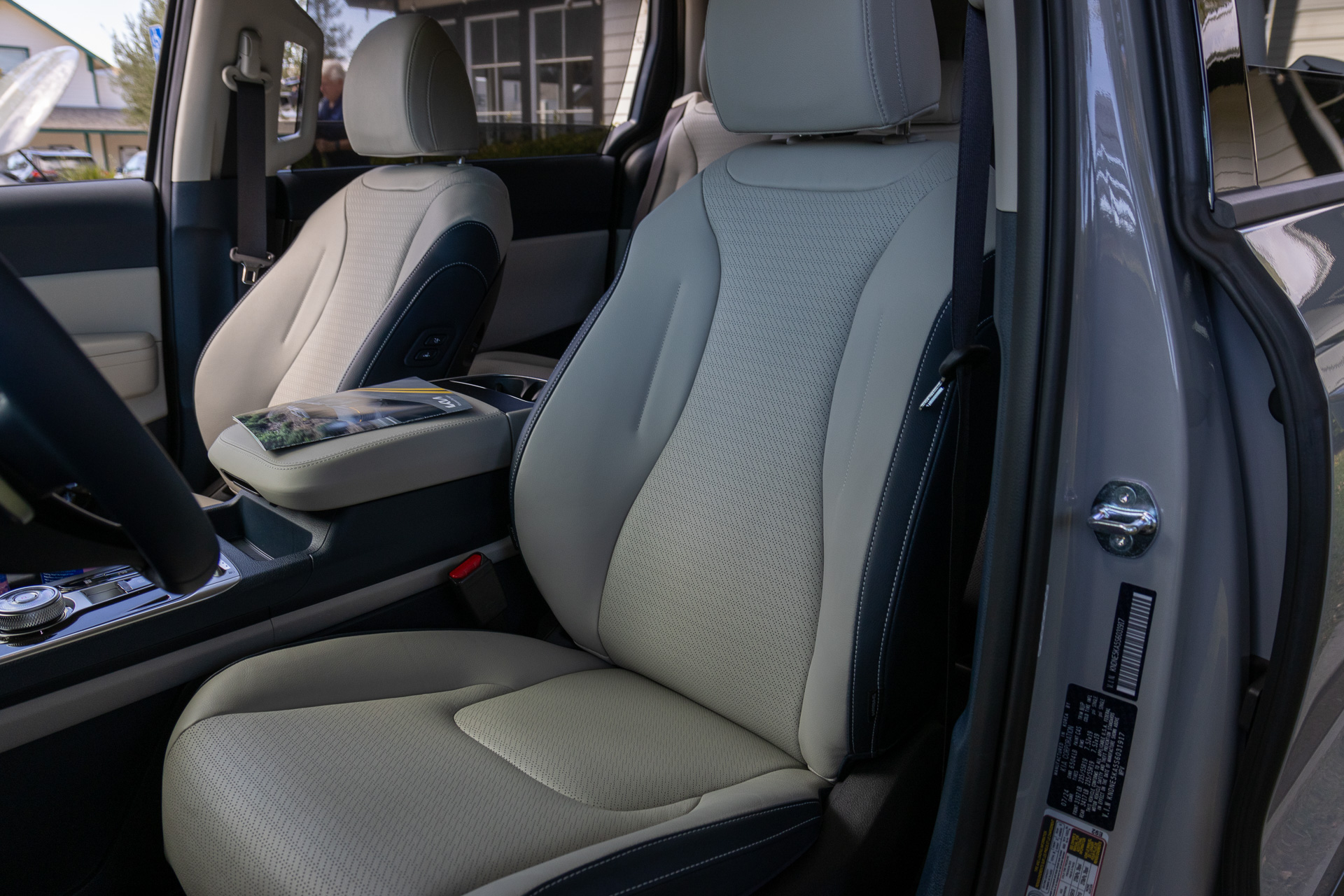
It’s a smooth ride in the front, and it’s equally smooth if you’re sitting in the back rows. It doesn’t launch third-row passengers over bumps like vans used to, which is always a danger when you’re sitting behind the rear tires.
The Carnival doesn’t have any van seat rattle, either. The cabin was impressively quiet, even on the brutal concrete highways endemic to Southern California. The boxy cabin and tall roof of a minivan can bounce noise irritatingly around the space, but Kia has tamed that effect.
Kia has put this hybrid system in enough vehicles that the wrinkles have long been ironed out. It’s not as grunty as the V6, but it delivers enough power for most needs, and it delivers it smoothly and quietly.
If you need max towing, or frequently haul a full load of stuff in the back, then the V6 will probably remain the better choice. Aside from one glaringly bad gear change, the hybrid system disappeared into the background. Which, aside from fuel economy, is one of the best parts of hybrid systems.
Fuel Economy Delivers on Hybrid Promise
About that fuel economy, we saw between 25 and 35 mpg indicated on the various segments of the drive route. With those lower numbers coming from long climbs into the mountains, ending up at well over 5,000 feet, the Carnival hybrid was impressively efficient. Though, we have to point out that the EPA figure can’t meet Toyota’s 36/36/36 mpg figure.
Kia said that it has used the hybrid system to change ride and handling. It can reduce pitch fore and aft by adding and removing motor power over bumps and do a similar trick to help stabilize emergency maneuvers. It’s not the kind of system you can feel. Of course, Kia says that means it is working as it should.
Upgraded Interior & Loads of Helpful Van Tech
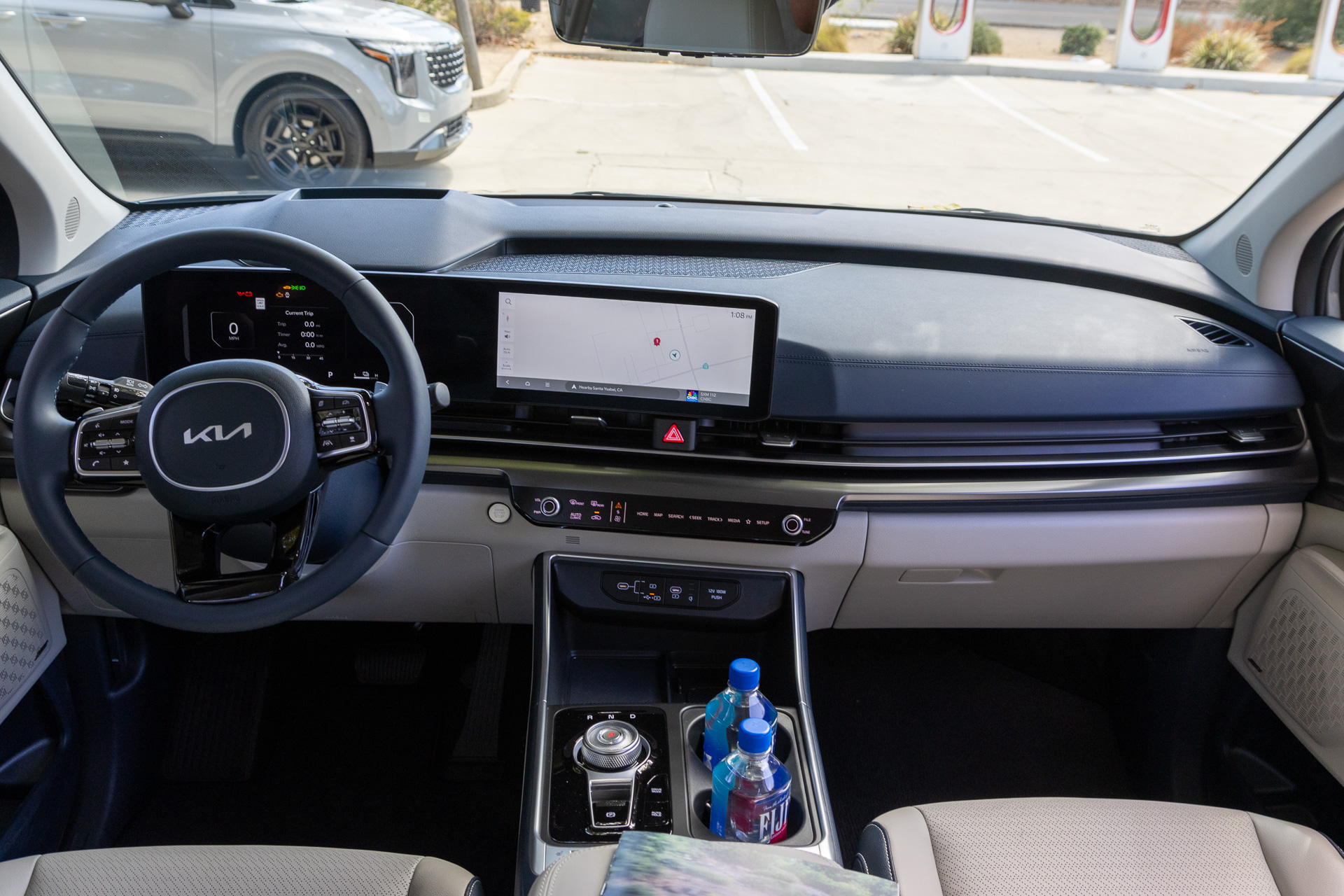
The van’s refreshed interior — you can get it in navy blue now — has what looks like the same screens for the dash and infotainment, but the hardware and software behind them are new. It’s smoother and quicker to operate, says Kia. A first drive like this doesn’t leave hours to play with it, but the features we did try out all worked well.
It comes with the minivan tech you want, like wireless CarPlay and Android Auto, half a dozen USB-C ports, and a pair of household-style AC power outlets. It also has a camera to let you see your passengers and a PA system to talk to them, and that’s standard for all but the base LX trims.
Kia Carnival Pricing
Pricing for the 2025 Kia Carnival Hybrid starts at $40,500. That’s $2,000 more than the equivalent trim with the V6, and $4,000 more than the entry-spec LX that is offered only with the gas engine.
EX adds a power passenger seat, hands-free hatch, and sun shades for both back roads and comes in at $42,700. SX includes two power sunroofs, a digital key, a surround-view camera, and Kia’s hands-on Highway Driving Assist system for $47,600.
The top of the line is the $52,600 SX Prestige that comes with a head-up display, Bose audio, and leather seating. It also offers the option of VIP lounge seats for the middle row and helps cut sound levels with laminated second-row glass. That’s a steep climb for not many extras, making the standard SX probably the one to get.
2025 Kia Carnival Hybrid Review: Summary
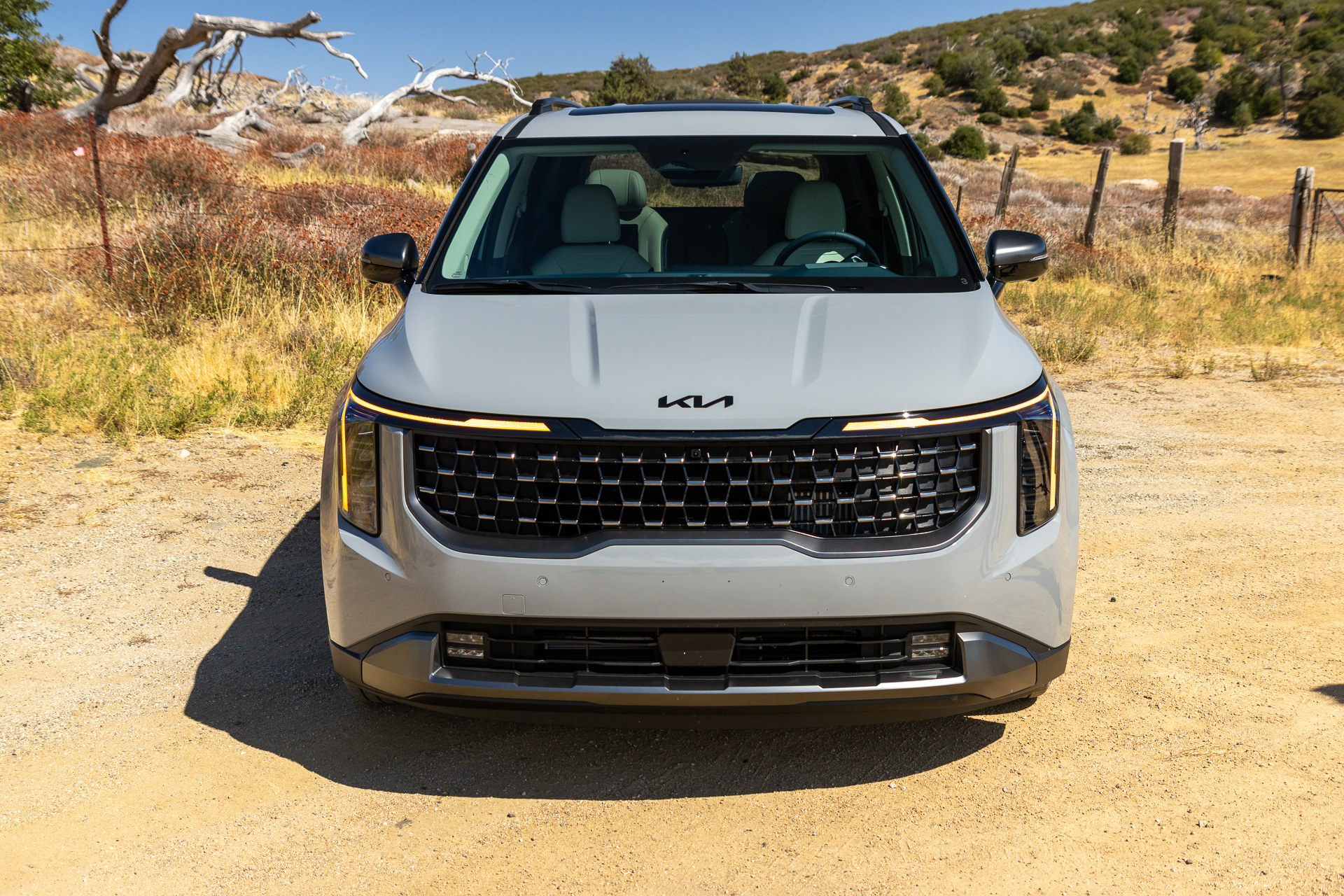
For 2025, Kia has made the already-impressive Carnival better-looking and more fuel-efficient. It remains a clever, capacious, and practical way to move loads of gear and people. And now it does it without sacrificing on style — or on fuel economy, thanks to that new hybrid system.
The only thing missing to make this package perfect would be all-wheel drive, a feature the Toyota Sienna offers. If you don’t have that need for extra traction, the Carnival is ready for your van life.
